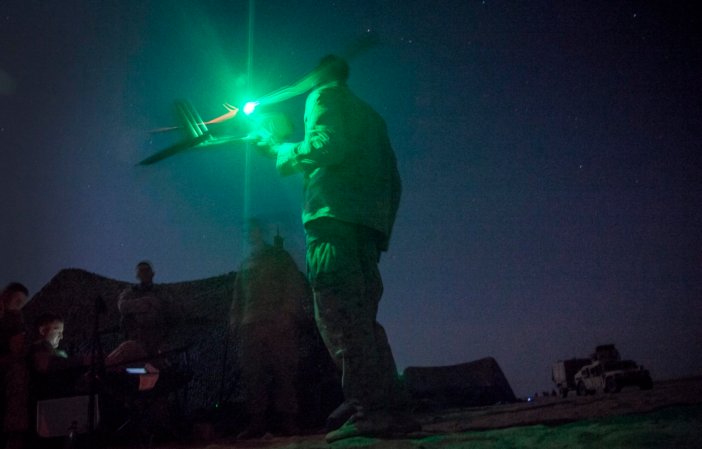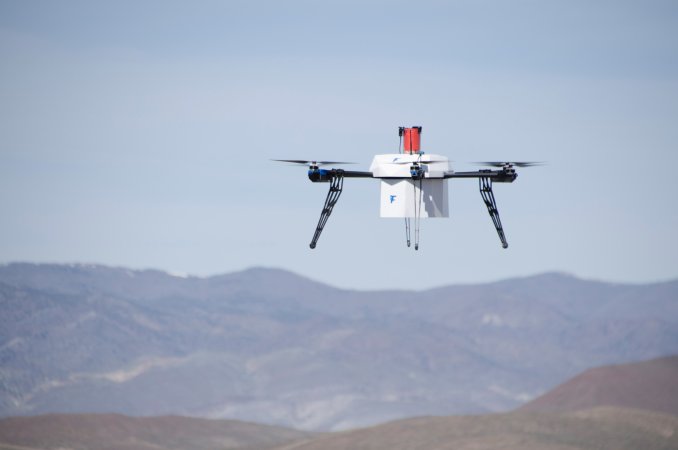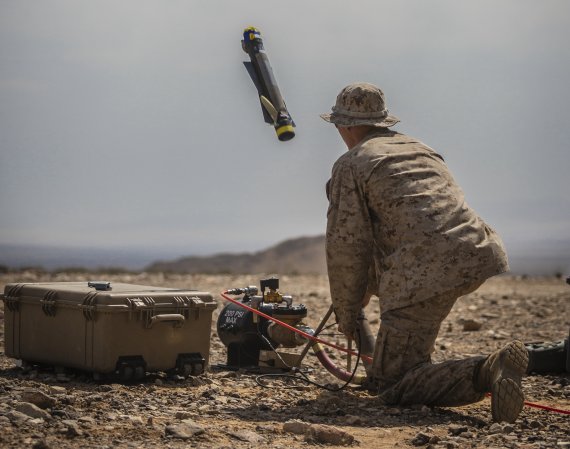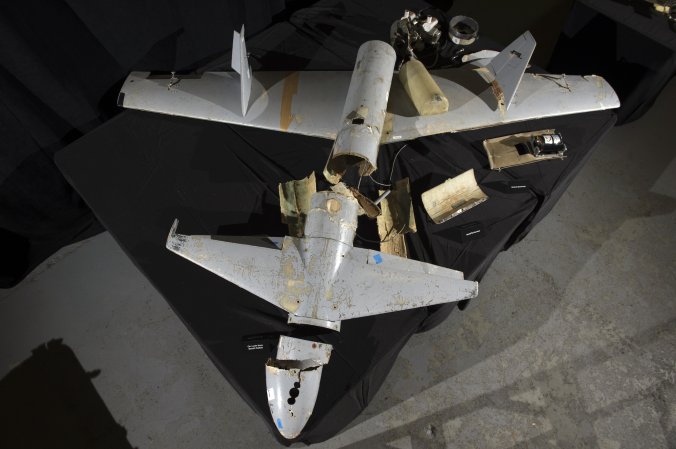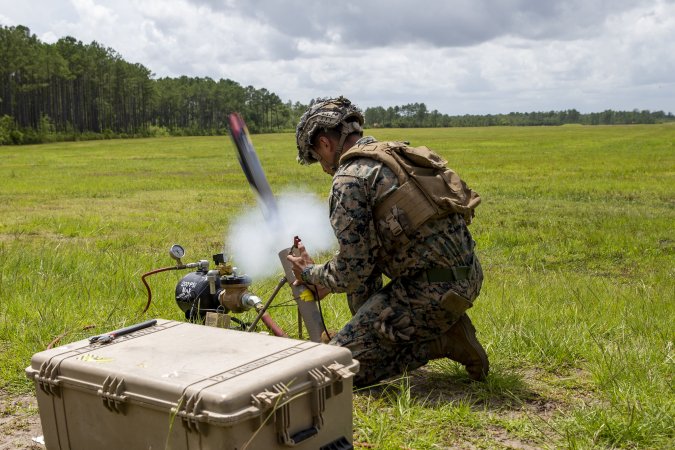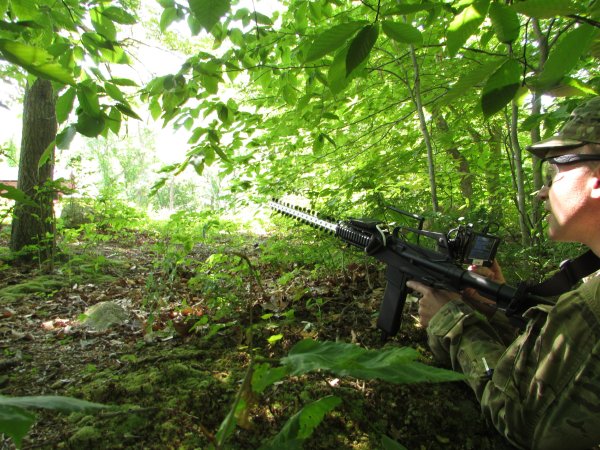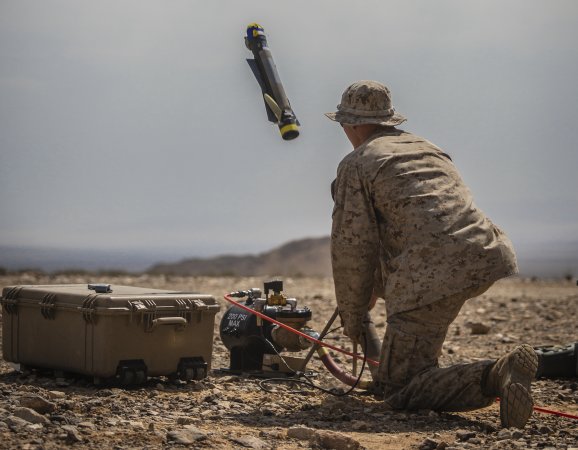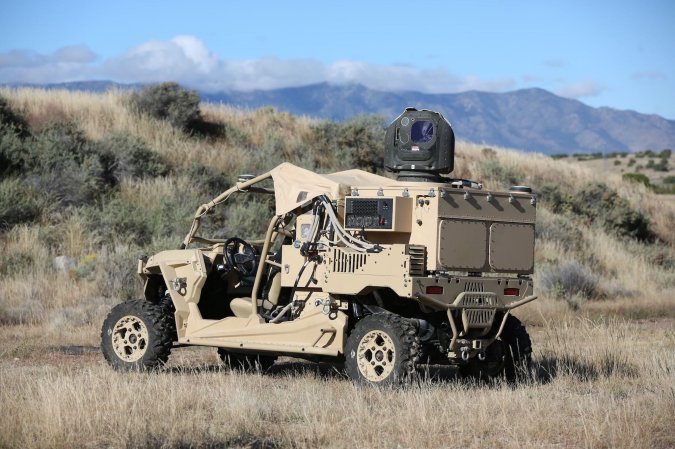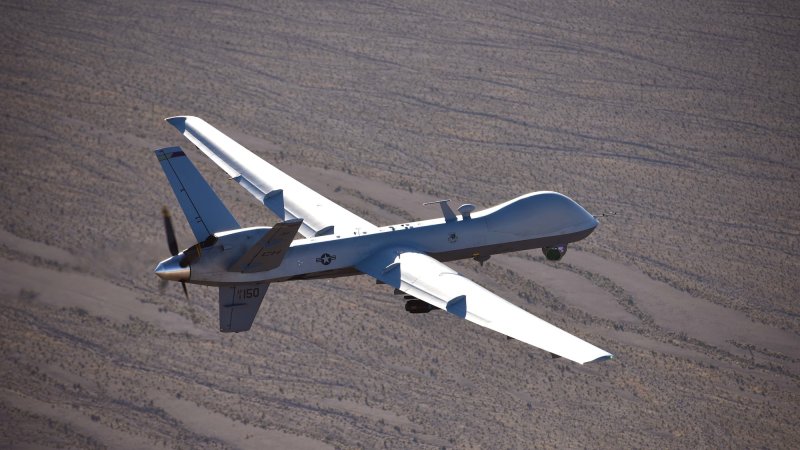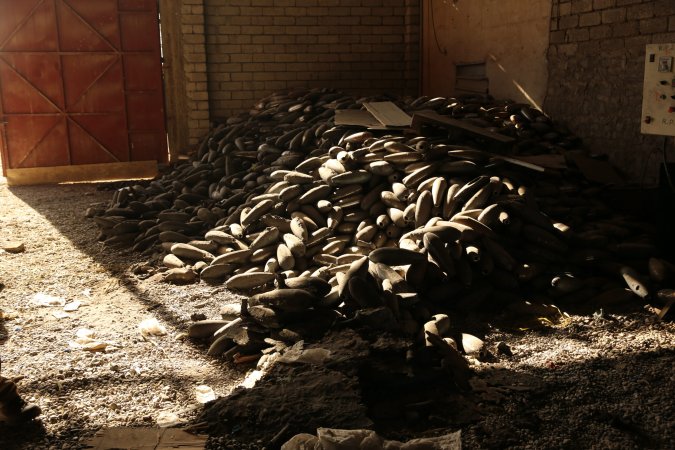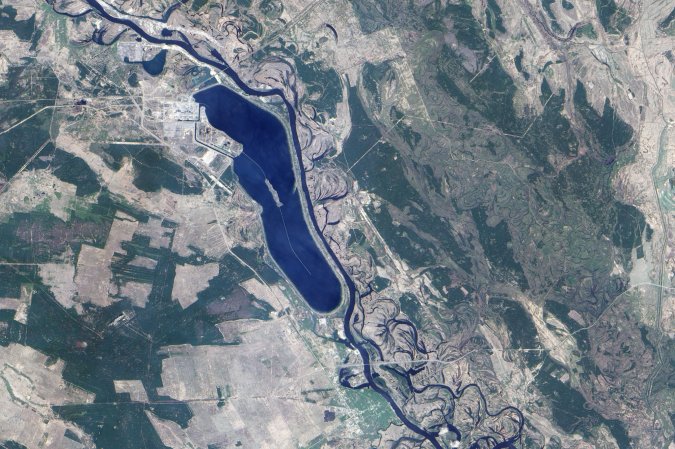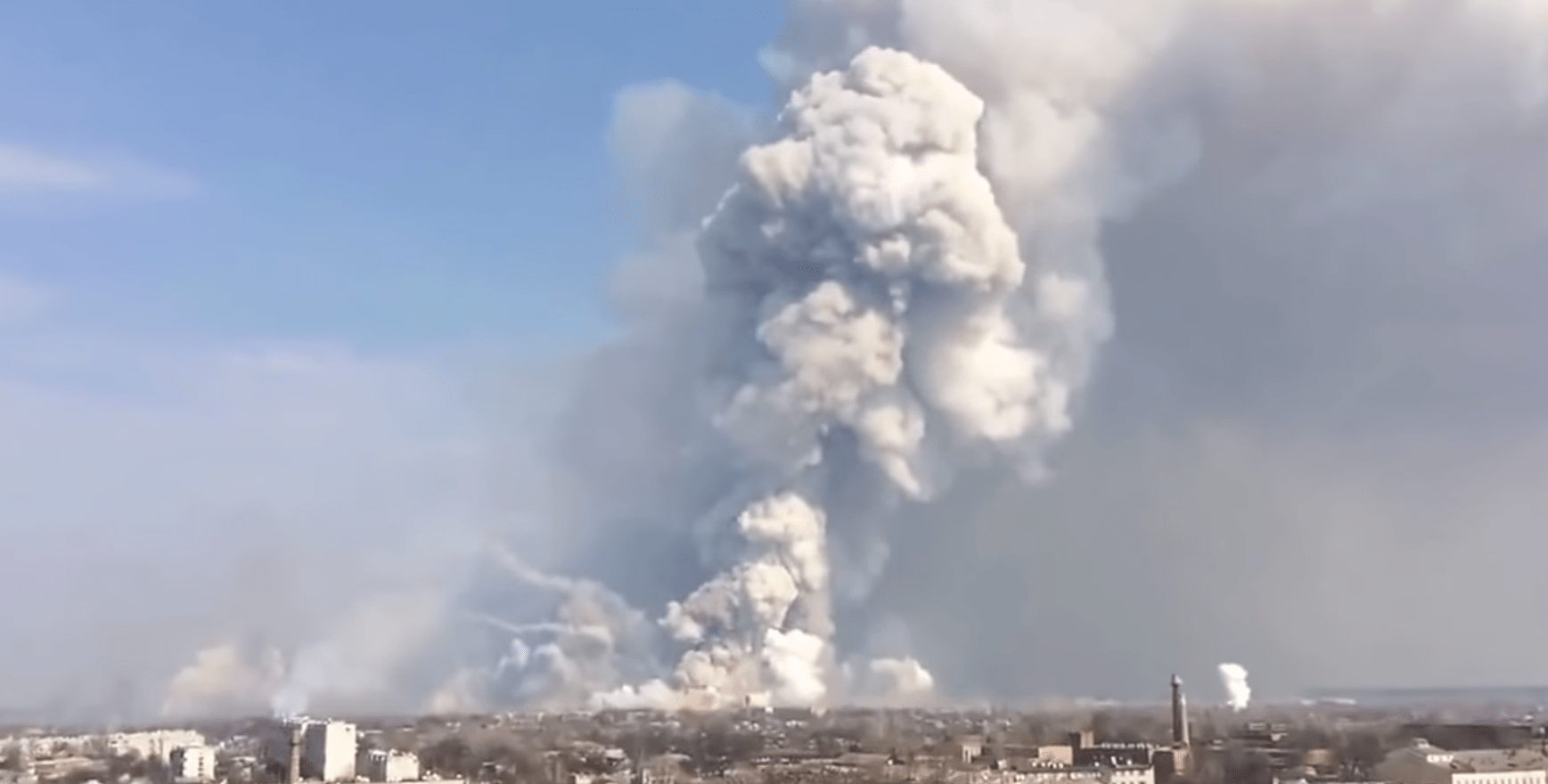

Every ammunition depot is a potential explosion waiting to happen. And in Eastern Ukraine, a stockpile of ammunition recently ignited, spewing smoke and fire into the sky in a dramatic video. The culprit? A small drone carrying a 1-pound grenade filled with the pyrotechnic substance thermite.
Any ammunition storage location, full of explosives collected in one place, makes a tempting target. For an attacker, the hard part is getting an explosive inside the perimeter to set it off. Drones are the ideal mechanism for this mayhem. Relatively cheap and expendable, a drone’s major limitation is how much weight it can carry. In this case, the aerial vehicle seems to have transported a Russian-made ZMG-1 thermite grenade.
Thermite hand grenades are light and potent. For example, the American military uses a thermite-based grenade similar to the ZMG-1. Describing the former, the U. S. Navy Small Arms and Special Warfare Ammunition manual says, “With imaginative use, the grenade can be an effective and versatile demolition tool.” According to the same manual, the American grenade can destroy oil drums, shipping containers…and metal ammunition boxes. Russia’s ZMG-1 shares these abilities.
With light weapons like these, even hobbyist drones can transform into deadly weapons. As a result, stopping drone attacks has become an increasingly prominent problem for the militaries across the world. In Iraq, the violent nonstate actors ISIS built drones, booby-trapped those drones, and also used regular hobbyist drones as grenade-dropping mini-bombers. In the eastern Ukraine, as fighting continues between the Ukrainian government and Russia-backed separatists, both sides have fielded drones to scout trenches and even act as artillery spotters.
To counter this type of drone warfare, countries are investing in everything from eagles to lasers to special jamming rifles. There’s no consensus yet on the best anti-drone tool—and until there is, it’s unlikely that every ammunition depot will manage to protect itself against drone threats.
That doesn’t mean Ukrainian military planners are helpless to prevent another explosion of this scale. The most straightforward change is to stop using open-air storage facilities. Open-air facilities are expedient, and can be set up so that if one section of the facility catches fire, that explosion is buffered by thick, dirt walls, these facilities are still open to attack from the air. There is another standard type of storage facility: earth covered magazines, sometimes nicknamed “Igloo” or “Yurt”, where the explosives are stored within thick walls and a thick layer of protective dirt on top.
“Earth-covered magazines provide temperature stability and are particularly desirable for the storage of propellants and pyrotechnics,” notes an Army training manual. “Earth-covered magazines are the best and safest type of storage facilities.”
In the meantime, before it can begin building better ammunition dumps, Ukraine is going to have to clean up the disaster site now. In 1969, Bob Leiendecker was the commander of the Army specialist unit assisting Marines as they cleaned up two ammunition depots that caught fire and exploded in Danang, South Vietnam.
“For places of this size I would imagine that it was mostly open storage,” says Leiendecker. “That means one pad of ammunition stored in a square or rectangular area surrounded on three sides by dirt mounds. Detonations in the pads will throw red hot fragments, possible burning ammunition and undetonated ammunition over the mounds into other areas. It is one big loud chain reaction.”
After the blast, clearing a site can take a long time. Cleaning up the Danang sites took six months total, and this site in Ukraine trained professionals will need time and will need to clear a larger area than just the ammunition depot, as massive blasts scatter tire-shredding fragments and potentially live ammunition across a vast area. This, in turn, will pull disposal professionals from wherever else they may be. And the work can’t be rushed. Leiendecker recommends that people cleaning up the site only work 2 or 3 days at a time, and then take a day off to stay sharp for the entire cleanup process.
“They will need ambulances and doctors standing by daily at both the clearance site and the demolition site,” says Leiendecker, “They will find that as one storage site detonated it blew live rounds and dirt into other adjacent storage areas. That means that in order to clear those area you have to carefully dig down thru scrap metal, live ammunition and dirt.”
Ukrainian forces could treat this incident as a wake-up call. While they might still struggle to stop drones, they can improve the design of their ammunition depots with tools like earth-covered magazines. Better structures and safety measures would mitigate the harm a single drone can do with a single grenade.
Watch the video of the explosion below:

This post has been updated.
